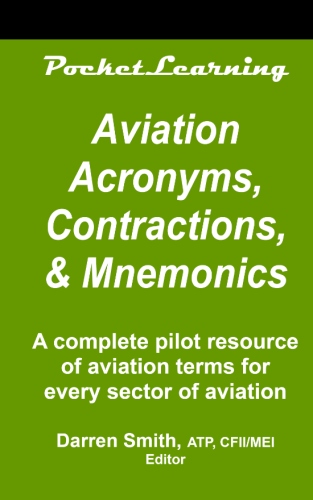
 |
||
| Home | Login | Schedule | Pilot Store | 7-Day IFR | IFR Adventure | Trip Reports | Blog | Fun | Reviews | Weather | Articles | Links | Helicopter | Download | Bio | ||
Site MapSubscribePrivate Pilot Learn to Fly Instrument Pilot 7 day IFR Rating IFR Adventure Commercial Pilot Multi-Engine Pilot Human Factors/CRM Recurrent Training Ground Schools Articles Privacy Policy About Me Keyword:  |
Decoder: Braking Action | Weather Contractions | Abbreviations
list | NOTAMs
Contractions | Aircraft
Soon, it will start to snow in the Northern parts of the country. For those of you who are sunbelt fliers (like myself) we rarely hear about braking action and decelerometers. A recent question prompted me to do quite a bit of research on the topic and here are the results. Want the complete reference guide? Click the green thumbnail to the above right. To start off with, a few definitions are required...
How do we measure MU Values?MU values are created by devices which measure runway friction or braking action capability. Runway friction (braking action) measuring reports are to be expressed using the name of the FAA-approved device, followed by the “MU”(pronounced “mew”), followed by the reported values and the time of the measurement. Here are the types of approved devices and their NOTAM abbreviations:
How is braking action reported?The NOTAM created could simply define braking action as provided by pilots using the runway. A sample looks like this:Example:
!ANC ANC 1/19 BA FAIR WEF 0802061500
Translated: At ANC airport, braking action for Runway 1/19 was reported as FAIR. The report was effective February 6, 2008 at 1500UTC. Airport management is responsible for observing and reporting the condition of a movement area. This includes measuring runway friction with an FAA approved device. With this device, MU values are created to describe each third of a runway. A sample NOTAM looks like this: Example: !DCA DCA 18 RFT MU 52/30/42 WEF 0712251000 Translated: At DCA airport, Runway 18 was measured with an RFT and provided MU values of .52 (good braking) for the touchdown zone, .30 (medium braking) midfield, and .42 (good braking) for the rollout portion of the runway. The report was effective December 25, 2007 at 1000UTC. Since airport management is responsible for observing and reporting the condition of a movement area, a variety of field conditions can be reported. This includes reporting SNOW, ICE, SLUSH, and STANDING WATER on the runway. There are 5 required elements for this kind of NOTAM:
The 15 types of runway conditions
|

|
| Home | Login | Schedule | Pilot Store | 7-Day IFR | IFR Adventure | Trip Reports | Blog | Fun | Reviews | Weather | Articles | Links | Helicopter | Download | Bio |
| All content is Copyright 2002-2010 by Darren Smith. All rights reserved. Subject to change without notice. This website is not a substitute for competent flight instruction. There are no representations or warranties of any kind made pertaining to this service/information and any warranty, express or implied, is excluded and disclaimed including but not limited to the implied warranties of merchantability and/or fitness for a particular purpose. Under no circumstances or theories of liability, including without limitation the negligence of any party, contract, warranty or strict liability in tort, shall the website creator/author or any of its affiliated or related organizations be liable for any direct, indirect, incidental, special, consequential or punitive damages as a result of the use of, or the inability to use, any information provided through this service even if advised of the possibility of such damages. For more information about this website, including the privacy policy, see about this website. |